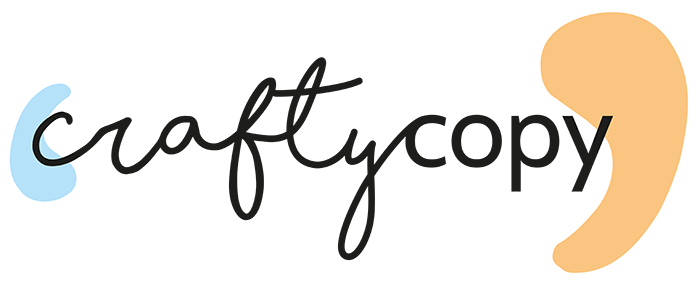Search Intent: What It Is & How to Use It for Your Content
Would you propose to someone who’s just asked you out on a first date? If the answer is no, congratulations: you already understand search intent!
(If the answer was yes, either you’re Ross from Friends or need to slow the heck down.)
Not taking Google search intent into account when it comes to SEO will lead to wasting time and money on creating content that doesn’t rank nor move your readers down the funnel.
Let me help you get it right.
What is search intent in SEO?
Search intent (which is also know as user intent, keyword intent, or user search intent) describes the purpose behind a query or online search.
In other words, the reason why a person is googling a certain term or question.
Don’t be fooled: the concept itself isn’t anything fancy or complicated.
Just think of your own online searches. No matter what you type, you’re always looking to find something, aren’t you?
Maybe that’s a specific piece of information, or perhaps it’s a product to buy.
Either way, that’s your search intent for a specific keyword whenever you type it on Google.
Easy, right?
What are the 4 common types of search intent?
While there are gazillions of keywords out there from ‘are avocados good for you’ to ‘zebra petting zoo’, they can all be traced back to four types of search intent.
That’s good news, isn’t it?
Even better: I’ll list all of them for the sake of consistency, but you only need to care about three of them in practice.
1. Informational search intent
As the name suggests, queries with an informational keyword intent are simply searches that are carried out to obtain information, whether that’s to learn more about a topic, to find a specific answer, and anything in between.
“Informational queries are the most common type of search intent, making up almost 80% of all Google traffic.”
Even though they mean that a user is looking for answers, informational keywords aren’t always a question.
Examples of informational searches
‘Game of Thrones explained’
‘How far is the Earth from the sun?’
‘Types of coffee’
‘Raccoons’
‘What is sustainable fashion’
‘Do I need SEO for my website?’
Best type of content to answer informational searches
Blog posts
Yes, in most cases, you should focus on informational searches on the blog on your business website.
Whenever I see LinkedIn posts or online articles asking ‘is blogging still relevant’, I can’t help shaking my head. My answer? Blogging will only be outdated when people stop using Google to find information.
In the meantime, it’d be crazy not to answer your target audience’s questions and keywords that are related to your business and products. Informational searches, in other words.
2. Navigational search intent
Navigational search intent is perhaps the most straightforward (and the least useful from an SEO point of view): it consists of searches carried out by users who are looking for a specific website or page.
Examples of navigational searches
‘LinkedIn’
‘Wordpress login’
‘Forbes 30 under 30 list’
Best type of content to answer navigational searches
Your homepage, core pages, and evergreen content (e.g. blog posts that will always be relevant and that have such a memorable title or angle that your audience will want to revisit them directly)
Navigational user intent is the one that matters the least from an SEO perspective in my opinion.
Why?
Because these users already know exactly what they want and from whose website/company they’re going to get it, so you can’t do much to generate additional traffic from them.
For example, with an informational search like ‘how to grind coffee’, you can attract more visits by having an attention-grabbing title and meta description, making it more likely that these users will want to open your blog post on ‘how to grind coffee’ rather than your competitors’. They know that they want some information regarding ‘how to grind coffee’, but they haven’t decided who they’re going to get it from.
But if they’re typing ‘Forbes 30 under 30 list’, they know that they don’t want just any under 30 list: they want the one written by Forbes.
3. Transactional search intent
Transactional user intent involves Google searches made by people who want to buy something right there and then (or, at the very least, add it to a wishlist or bookmark it for later).
In most cases, they know exactly what they want to purchase but not necessarily what website/platform/store they’ll be buying it from.
Examples of transactional searches
‘Buy On Writing by Stephen King’
‘Twin Peaks DVD set’
‘80s windbreaker second hand’
‘iPhone 13 mini’
Best type of content to answer transactional searches
Your sales pages and product pages
Transactional keywords are for the smallest chunk of your target audience that’s already at the bottom of the sales funnel, in full buying mode.
If you sell what they’re after, you want to be one of the first pages to show up on Google when they’re ready to hit that ‘buy now’ button.
4. Commercial investigation search intent
This is the cousin of transactional searches. Basically, commercial investigation consists of Google searches carried out by people who are planning on buying something at some point but are still narrowing down their choices.
They know what type of product or service they need: they just haven’t decided on a specific model or brand.
Examples of commercial investigation searches
‘Best vegan leather bags’
‘Top antivirus for Windows 10’
‘Cafes near me’
‘Best restaurant in Liverpool’
‘HelloFresh vs Blue Apron’
Best type of content to answer commercial investigation searches
Comparison and round-up blog posts
To harness commercial investigation keyword intent, you must help your target audience figure out what product or service would be the very best for their specific needs.
In some cases, they already know the type of product that they want. In some others, they’re torn between two or more specific options.
Now that we’ve covered all the different types of search intent, I’ll be honest: sometimes, you could argue that certain searches overlap when it comes to these four categories.
For example, if someone were to Google ‘AI course Deep Learning AI’, it could be seen as a transactional search (they’re looking to buy a course on artificial intelligence) but also navigational (they’ve already decided that they’re going to buy it from Deeplearning.ai and are just looking for that sales page again).
Overall, however, I think you can still narrow it down to one main type of search intent.
In this case, I’d say that, unless you own Deeplearning.ai, it’s navigational. It’s highly unlikely that you’ll be able to convince them to buy your AI course if they’re already typing that keyword, don’t you think?
Why is search intent important?
“Search intent is extremely important when it comes to SEO and marketing because you should prepare the right content based on your audience’s intention if you want to attract their visits and convert them into subscriptions or sales.”
Going back to our initial marriage proposal analogy, you don’t want to scare someone away by showing them a salesy page if what they’re looking for is some generic information on the subject.
At the same time, if someone is looking to buy a specific product and you use that transactional keyword in an informational post, you’re missing out on sales.
Basically, you shouldn’t just pick a keyword and create the type of content that you see fit around it: you must understand what someone googling that keyword is actually expecting to find… and then give it to them!
Search intent isn’t just important when it comes to your audience. It matters to Google, too.
When someone types a keyword, search engines look for the best results. And the best results aren’t just the most comprehensive: they’re the ones that match the Google search intent behind the actual keyword as well!
So, if your web pages and blog posts don’t, they won’t show up in front of your audience’s eyes in the first place.
How do I use search intent on my website pages & blog posts?
To use search intent correctly, you must first understand what your audience is looking to find and do when googling a specific keyword, conduct some research, and then ensure that your piece of content matches their intent (and is the best option out there).
1. Figure out the search intent behind a keyword
You’re more than welcome to pay for some AI keyword search intent software like Keywi or Keyword Insights, but… my honest opinion?
As a human (as I’m sure you are), you have a bigger advantage over AI when it comes to figuring out the search intent behind a search. In most cases, it’s common sense!
Think about it: if someone is googling ‘what is the difference between light and dark roast coffee’, are they looking to buy it? Of course, not. Not yet, at least.
You first need to explain this difference to them. Then, by all means, you can link to your light and dark roast coffee at the end of your informational blog post. But you first need to build the actual piece of content around that question, not present them with a sales page.
Some keyword modifiers can also help you understand the search intent behind a query:
Informational: why, how, how to, what, who, where, learn, tutorial, info, guide
Navigational: [these mainly involve brand names or names of specific products/services]
Commercial investigation: vs, best, top, near me, comparison, roundup
Transactional: buy, buy online, second hand, cheap, discounted, order, offer
“In my opinion, however, the best way to understand search intent without leaving it to guesswork is to google that keyword and analyse its top results.”
What type of pages are they: standard web pages, sales pages, product pages, or blog posts?
And, if they’re blog posts, how are they structured: do they provide an overview of a subject, compare two products, or offer a roundup?
2. Create a web page or blog post that aligns with your audience’s expectations
Now that you’ve realised that, say, most of the top results for ‘how to grind coffee beans without a grinder’ are informational blog posts, write an informational blog post yourself.
But not just any blog post: aim for it to be the best one out there!
When you analyse the other top-ranking results, you shouldn’t focus on keyword search intent alone but on what’s missing from them and how you can improve them.
Is there a popular question that has been left out? Are other articles perhaps a bit too technical while your audience is looking for a jargon-free answer?
Now, let’s address the elephant in the room:
“Yes, this is hard work and extremely time-consuming. But if you write content without taking these things into consideration, you’re wasting even more time… because you’re not writing the right thing for your audience!”
I hope you’ve found my guide on search intent useful.
Shall I save you time and write content that matches your audience’s search intent for your female-founded biz?
If you’ve realised that your sales pages don’t match your users’ intent or you haven’t got time to write such in-depth blog posts on a regular basis, I’d love to help.
I 100% believe that ambitious female entrepreneurs deserve to become THE go-to solution in their dream market’s eyes.
Audience-oriented content matching their search intent will help you do just that.
Discover more about my website copywriting and blog writing services.
And, if you’ve found this useful, subscribe to my weekly newsletter to receive tips and content prompts to connect with your audience through your marketing copy..
More #crafty blog posts on this topic:











